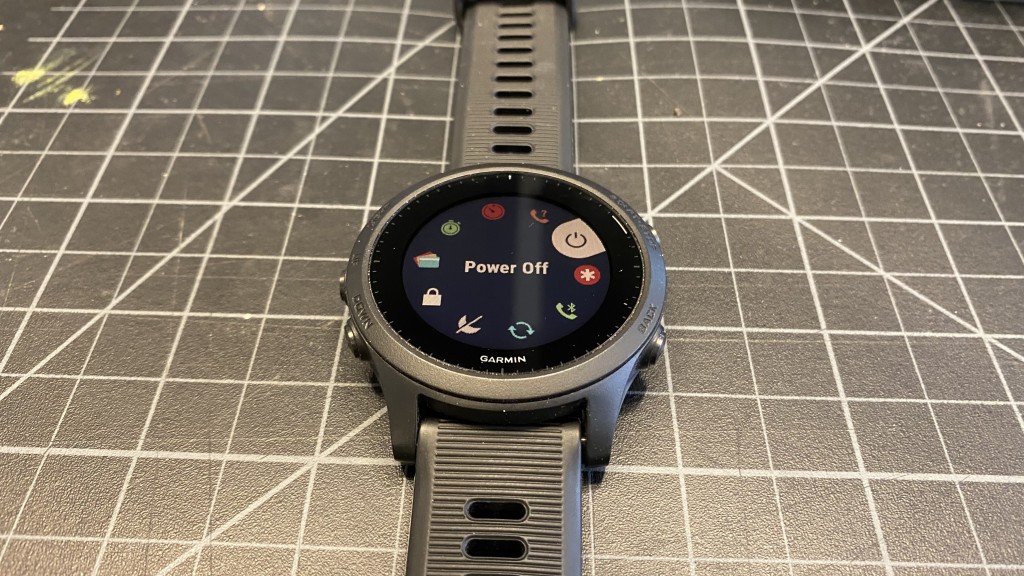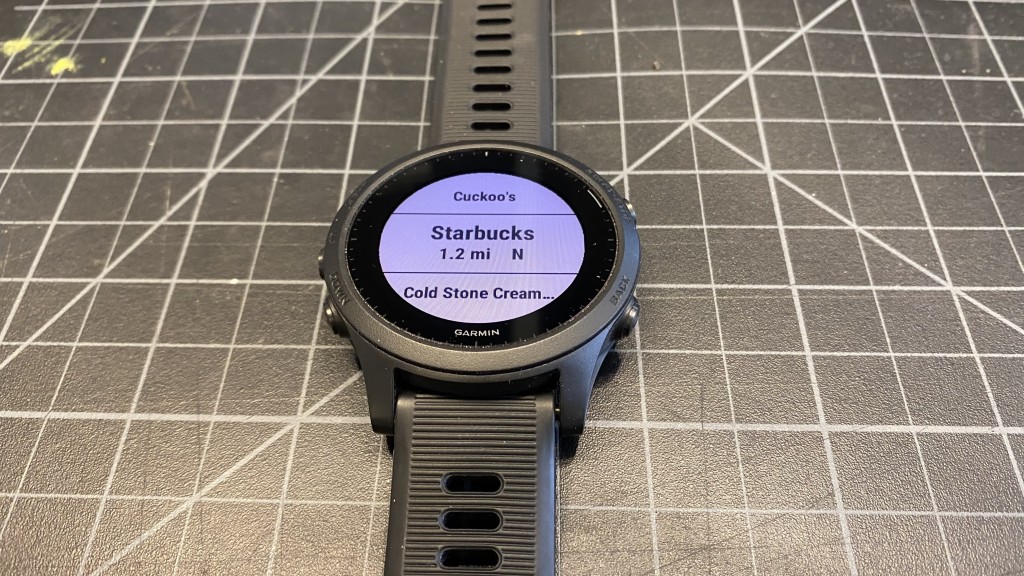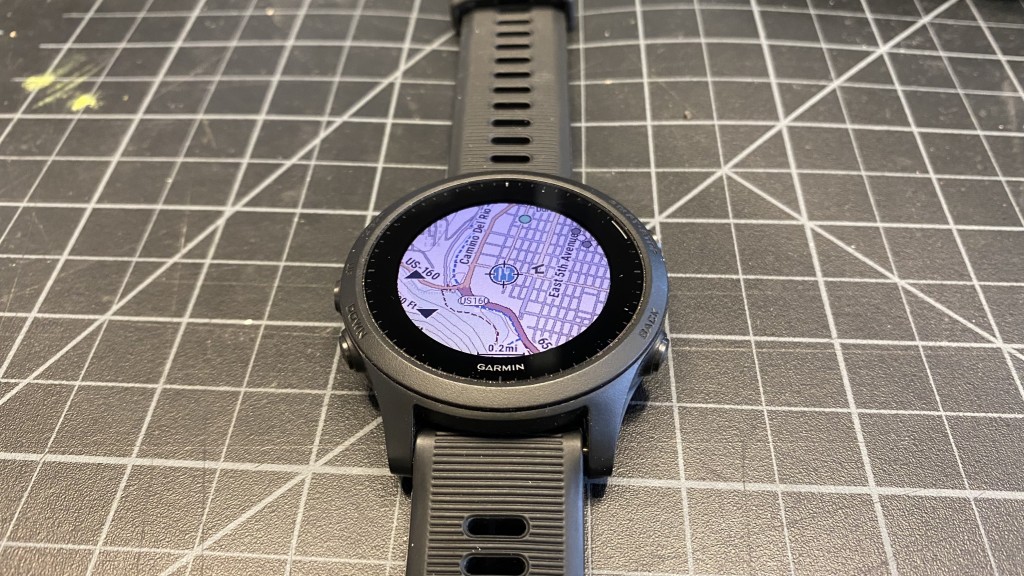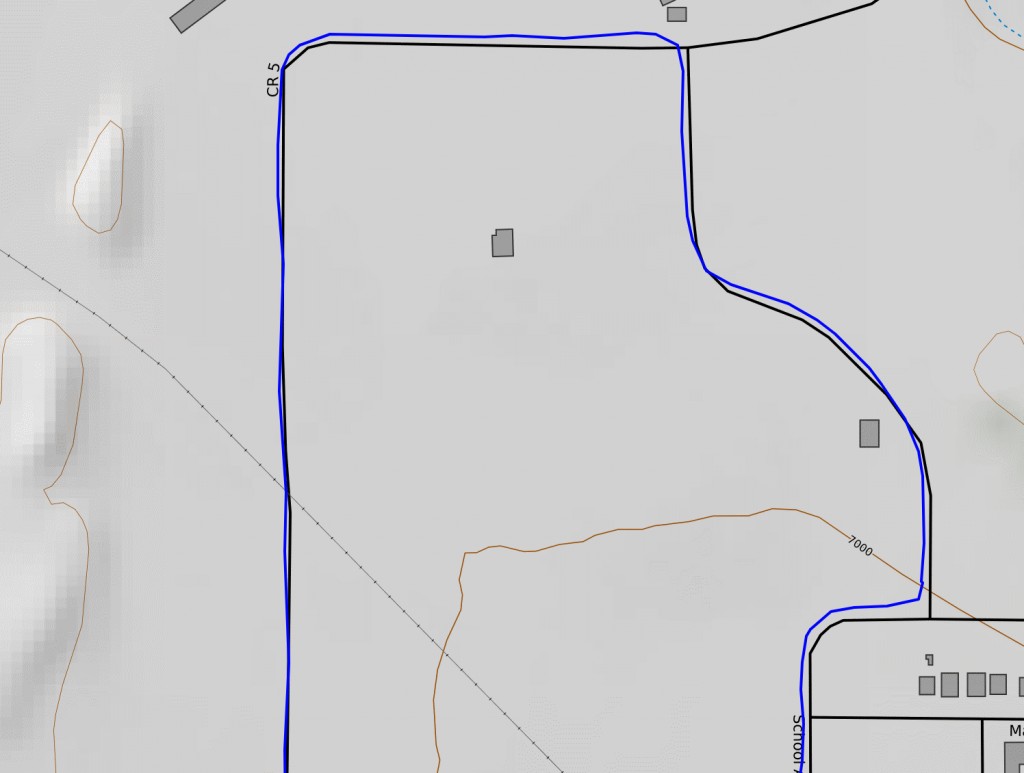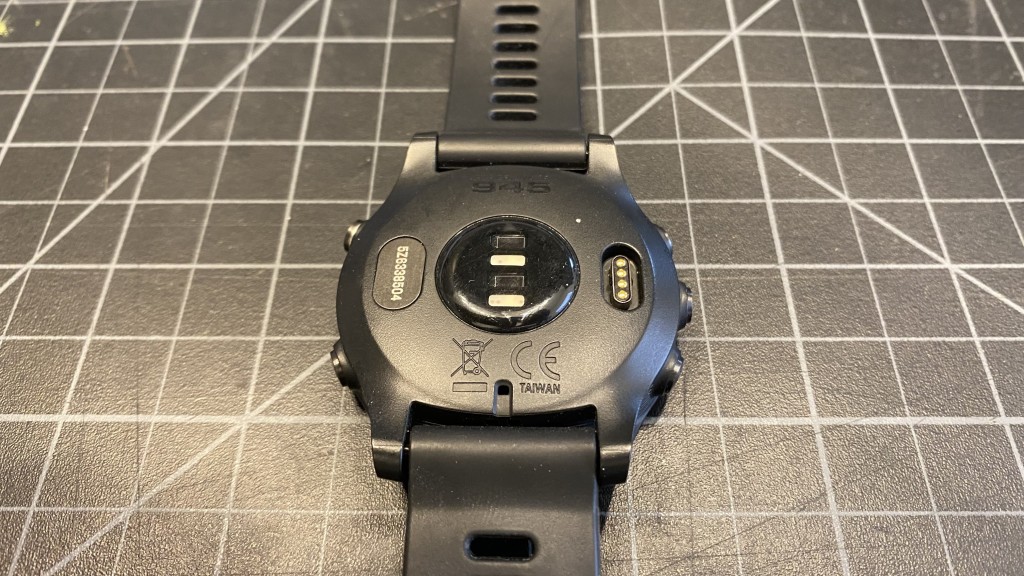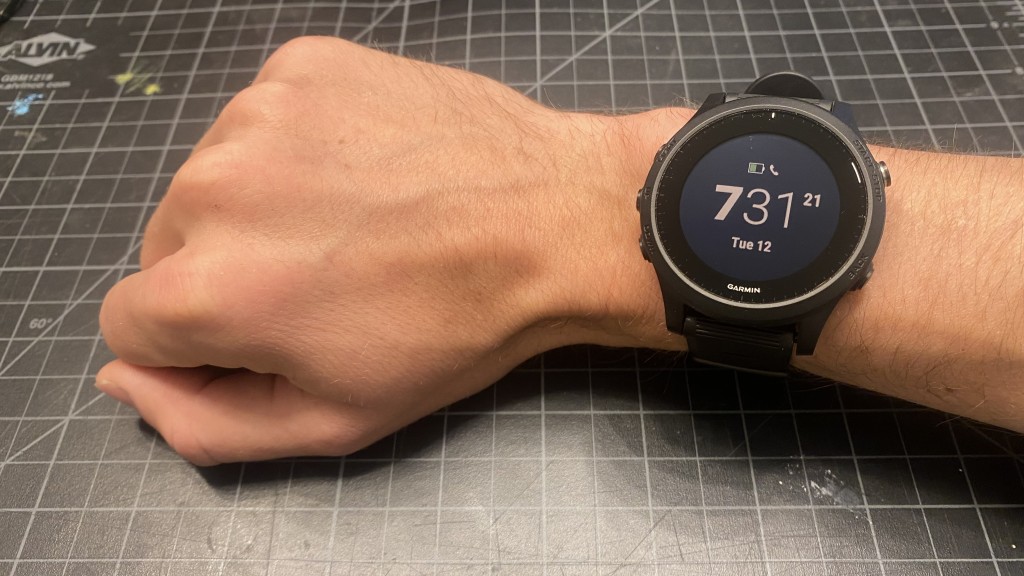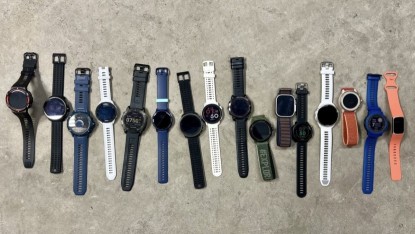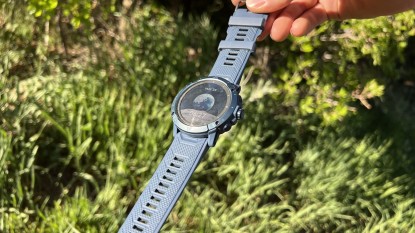Garmin Forerunner 945 Review
Our Verdict
Our Analysis and Test Results
The Forerunner 945 received high marks across all test categories. The low-profile design contains hundreds of feature options and is one that is unique on the market. It touts great battery life suitable for some ultra distances and has every feature you could hope for, including preloaded detailed maps, navigation, and a ton of activity profiles. This is an elite performance watch for any athlete working towards their next goal.
Performance Comparison
Features
Packed with features in a lightweight package, this model will not slow you down. It's loaded with everything you'd want in a fully-featured GPS watch, including access to Garmin's robust ecosystem of app integrations, challenges, downloadable workouts, and more. GPS tracking, full navigational capabilities, layered and preloaded maps, course creation, Garmin Pay, and downloadable music. While the Garmin Fenix 7 still has just a few more features and storage, the Forerunner 945 is built for the dedicated athlete and will provide all necessary functionality. Plus, the software easily syncs and integrates with other popular platforms like Strava.
Garmin's toolset and widgets are the most useful out of any of the brands we tested. The Coros and Suunto models both lack some functionality, giving Garmin the edge in regards to quick access features. We also appreciate the useful descriptions and scores that accompany health metrics like sleep. Instead of only providing the data, Garmin provides you with a score, so it's easier to understand and requires less analysis on your end.
Battery Life
For most ultra-athletes, the battery life on this model should be sufficient. Garmin claims that smartwatch mode will last two weeks in best-case scenarios. Regular GPS (with smartwatch mode) is purported to last 36 hours without music and 10 hours with music. We measured charging time to be only 75 minutes. With these metrics in mind, the measured amount of battery life we got was a little lower than these claims — especially with use over time.
For regular use (which for us included 3 - 4 activities per week), we got a battery life of 1.5 weeks. On the weeks where we had long runs, we got just over a week before needing a charge. In comparison to the rest of the watches on the market, this is okay but not exceptional like we've seen in other watches boasting incredible everyday battery life.
For GPS battery life, we tested the 945 while running a 100-mile mountain race, a 50K ultramarathon, and while it sat outdoors without having to track. During all of our tests, we kept all the settings as they came out of the package. We didn't turn off notifications or change anything from the factory settings, as most folks probably will. When testing just under the open sky, without movement, the battery lasted an astounding 46 hours with a full GPS signal. We realize that this is the “best-case scenario test” and isn't what you should expect for an actual activity with a variable satellite signal. During active use using the GPS, the battery lasted closer to 28 hours.
Garmin makes battery modes a priority, and they are easily accessible on this model. We appreciate that the options to change modes are direct and easy to accomplish when starting an activity. The on-screen images show exactly what will be impacted via the different modes, like turning heart rate on/off or reducing the GPS accuracy. Battery saver modes are also available in the toolset, which is easily accessible by long-pressing the back button.
Ease of Use
Even with many features, the Garmin user interface is easy to use, and the menu systems make sense. The dedicated button mappings on Garmin products are our favorite and make navigating throughout the watch a breeze. These buttons gave us fewer accidental presses than the scroll wheel found on the Coros models. Because of this, lockout modes aren't needed, and quick access is possible. While a few extra seconds don't matter at the office, that extra step while running a fast mile is frustrating.
You can change out watch faces using the Garmin IQ app, which gives you access to hundreds of options. The menu choices are extensive, with the ability to add or take away options and optimize as you wish. This all takes a little time to figure out, and for those that aren't completely gear savvy, you might have to look up a tutorial. For ease of use, the 945 earns high marks because while it takes some time to learn the features, the design is intuitive.
Garmin was the first to implement a toolset and widget interface with its watch, and Coros has mimicked the design. These are extremely helpful for quickly accessing different functions of the watch. Rarely do you need to go through menus anymore, and we think Garmin has refined its toolset to be the best on the market. Helpful features like finding your phone, starting alarms, and turning on battery-saving modes can all be accessed by long-pressing the back button.
While equipped with topo maps, we prefer the touch navigation found on the Fenix 7 and Coros Vertix 2 models. That said, for serious navigation tasks, you will still be pulling out your smartphone regardless of a touch-enabled screen.
Accuracy
While GPS accuracy is trustworthy on the 945, the heart rate and blood oxygen sensors could still use a bit of work. That said, they are just as good as most optical sensors currently on the market.
GPS accuracy proved to be excellent on our three-mile remote test track — this watch only varied +/- 0.01 miles. Most of the competition also scored great, which is why so many of our models receive praise for their accuracy. The 945 is equipped with multi-satellite capabilities, meaning it can talk to all major nations' satellites. This greatly improves the accuracy and should work for all but the deepest canyons.
Heart rate accuracy is also good in the realm of optical heart rate sensors. The sensor on the 945 is raised slightly from the bezel with a good connection on most wrists. It's relatively flat and doesn't press into the skin either. When it flashes green, you know it's measuring heart rate. It had amazing accuracy during our sitting tests with a variation from the actual heart rate of just 0 - 4 bpm. While exercising, when sweating, or if the watch was pressed into our wrist (as when biking), we'd note that heart rate would get lost here and there. That said, when it was picked up again, it was never off by much.
The blood oxygen sensor still needs a bit of work. It took a very long time when we tried to get it to pick up reading the first time. When it finally did, it gave us a reading of 93% at 7,000 feet. Another one of our tests at 800 feet got a reading of 93% again. As a result, this isn't a sensor we'd entirely trust yet, especially if we were monitoring our oxygen saturation for health reasons or while acclimating to higher altitudes. That said, we did some breathing exercises and did see our oxygen rise with big inhales (which is as expected) and fall after holding our breath. So the trends are correct, just not the actual numbers.
Design
The design is one of the biggest pluses of this watch. There are very few high-end GPS watches that pack in hundreds of features in such a flat and low-profile finish. Many others are chunky and heavy, but the Forerunner 945 is the opposite. It earns high marks in this category for its low weight and slim profile.
This watch does not have a touch screen, but the screen is crisp and easy to see, with all the right data presented as you need it. Any activity profile can be optimized to show you exactly what you want. The font is very large, and you can change the look using the Garmin IQ app. The case is made of a polymer that is also resistant to scratches. After using it for months, it still looks new. That said, this model is all plastic which is great for being light, but it might not hold up great in the backcountry.
We like the removable silicone band, which is an ideal length with enough eyelets to facilitate a fit for smaller wrists. The only caveat of the band is that tools are required to change it out. Many other options have a quick release, but you need a mini screwdriver for this one.
If you have a dedicated wristwatch, this may be the perfect addition to your collection. But, we like wearing our GPS watch 24/7, and this model comes across as a bit dull at times. We wish there were more implementation of premium materials which are often found at this price point. Design is a very subjective metric, so take a look and think about how each looks for your style.
Value
We feel that this watch is for a very specific user group, so we find the price tag a bit hard to swallow. If you are a dedicated and experienced runner or triathlete, this could be the perfect model for you. However, we like wearing our GPS watch all the time, and the durability and design of this model are a bit basic, in our opinion. Ultimately there is no arguing this watch excels at what it's designed for, but if it's worth the money over something even lighter like the Coros Pace 2, we aren't sure.
Conclusion
The Garmin Forerunner 945 is one of the best watches for people focused on performance. If you are a dedicated athlete, this could be the perfect model for you. We feel it's best to supplement a collection of watches or for those who want the lightest fully-featured option. We can't justify the price given that you can receive a more durable prettier-looking model that looks great even when you aren't exercising.




